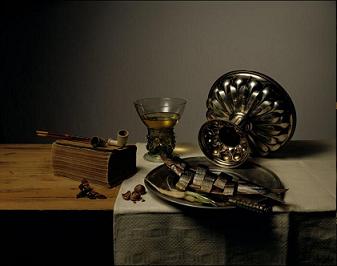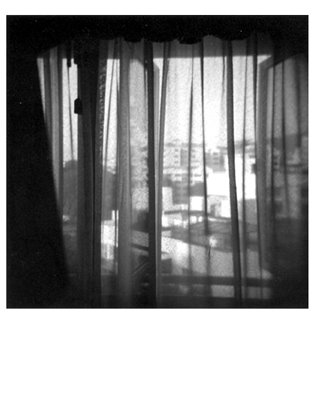affair wih an art form

Still Life, as with so much of photography, has its roots firmly embedded in the romanticism of traditional painting techniques. Still life usually seeks to illustrate the natural world and to present something more than a simple record of the scene. When a painter works, the resulting picture will reflect what's has been in the artist's mind - predilections, frustrations, enjoyments and moods etc. This applies to the photographer as artist too - so our pictures represent something within us, making each unique.
During the 17th century a branch of Dutch painting created an almost specialist form of the still life and raised it to the state of high/fine art. Often the scenes from these Dutch masters show tables fairly creaking with layers of food, brimming chalices of wine, sprawling game with fine cloths and brocades adorning the frame. They're rich in chiaroscuro, texture, sombre colour, sparkling highlights and an infinity of shadows. Often pictures such as these were aimed at a market of wealthy, likely buyers, who wished for scenes to decorate dining rooms of fine houses.
The subjects for still-life pictures are often simple and commonplace. The familiar can be rendered special and significant by the treatment that it's given. Just as trivial words can provide the source for a beautiful song so trivial objects can be arranged to form a beautiful picture.
It's hardly surprising then that photographers since the inception of the medium have sought to emulate the traditional forms of still-life. Experiments have been made to extend the range of the genre and to seek methods of involving the viewer. Cezanne and Salvidor Dali certainly experimented greatly with the accepted form by their distortions of plane and perspective and photographers such as Man Ray and Andre Kertesz in their turn pushed back the boundary lines.
Still life photography presents the photographer with something of a "blank canvas" and in this respect the beginning is closely allied to the traditional, painterly forms of art. Ideally the photographer should be involved in the process of creating the scene, building it up from an empty space and using the shapes, textures, tones and colours presented. Add to this the selection and arrangement of lighting, the various technicalities surrounding exposure, the range of darkroom skills and after treatment and one can readily see that still life work considerably stretches the photographer both artistically and technically.
Quoted from Clive R. Haynes FRPS.
Photography from Mocafico.com~Guido Mocafico


0 Comments:
Post a Comment
<< Home